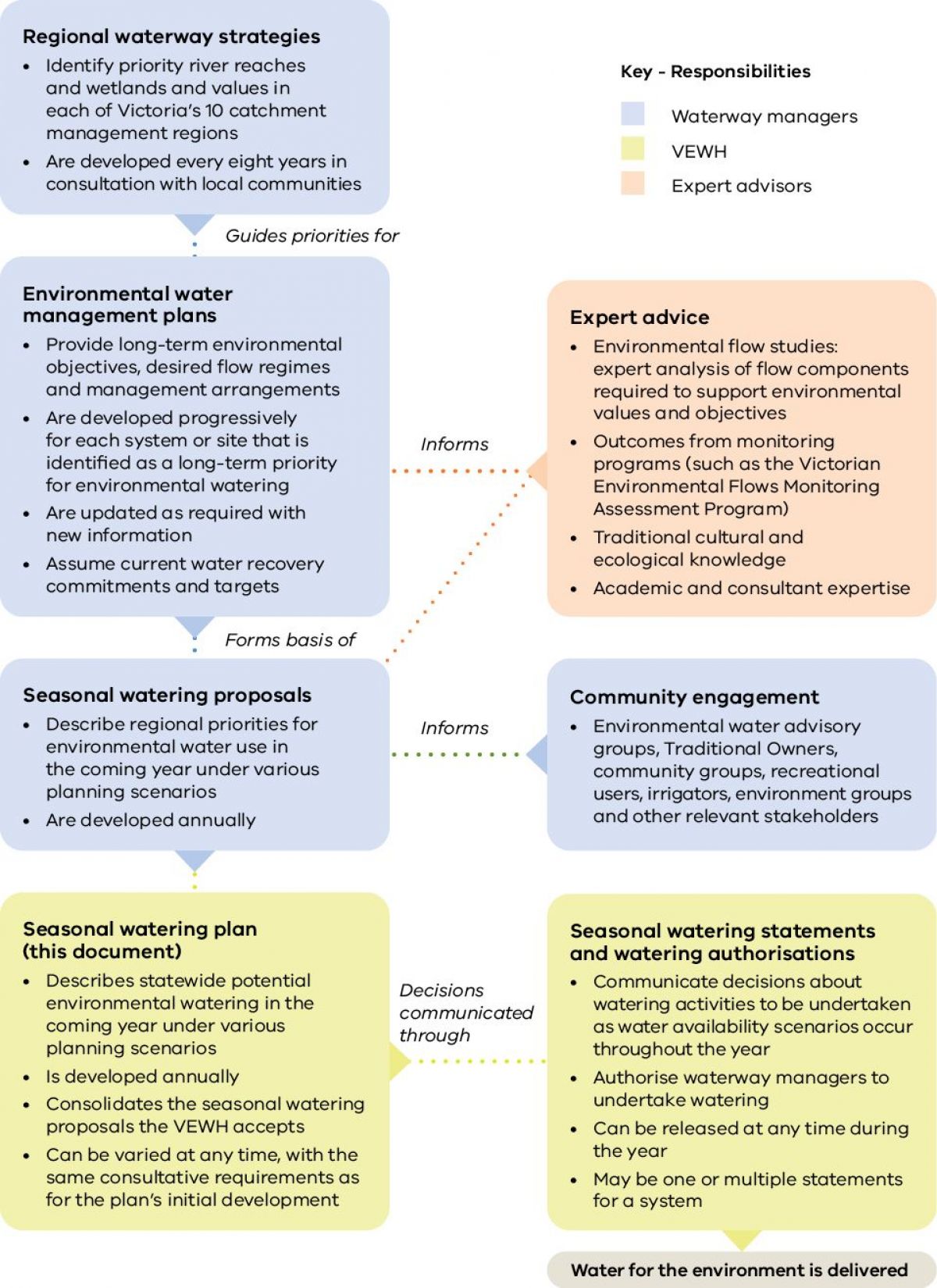On this page:
The VEWH annual seasonal watering plan is developed each year based on seasonal watering proposals submitted by catchment management authorities and Melbourne Water.
It is published on or by June 30 each year.
Seasonal Watering Plan 2025-26
Seasonal Watering Plan 2025-26 section downloads
About the seasonal watering plan
The seasonal watering plan is a statewide plan that guides decisions about delivering water for the environment in Victoria. It outlines how water for the environment is likely to be used across the state under different climate scenarios and tells the VEWH’s program partners, Traditional Owners, stakeholders and communities what to expect during the water year.
The plan is developed by the VEWH in close partnership with waterway managers – who engage extensively with their communities including Traditional Owners, storage managers, land managers, and scientists – in a planning process that is informed by scientific evidence, biocultural knowledge, local inputs and on-ground evaluation.
Seasonal watering statements
Seasonal watering statements communicate decisions about environmental watering activities as water availability scenarios occur through the year and authorise waterway managers to order and deliver water in the water holdings on behalf of the VEWH to achieve environmental outcomes.
Changes to the seasonal watering plan
Under the Victorian Water Act 1989, the VEWH can only authorise use of water for the environment where it is consistent with a seasonal watering plan. This provides transparency about what environmental watering is planned.
To enable flexibility to changing conditions, under the Act we can vary sections of a seasonal watering plan.
This could be to incorporate new knowledge or to adapt to any circumstances not identified by 30 June.
What changes don’t need a formal variation
Changes that don't require a variation to the seasonal watering plan include:
- minor operational adjustments to specific watering actions
- using the water to manage environmental emergencies
- using small volumes of environmental water for technical investigations
- facilitating water deliveries held by other water holders for downstream objectives.
The planning process
Each year waterway managers scope potential environmental watering for their regions for the coming year and prepare seasonal watering proposals for submission to the VEWH.
The proposals may draw on environmental flow studies, environmental water management plans and regional waterway strategies. The proposals also incorporate information and advice from Traditional Owners, technical experts, and local communities.
The seasonal watering plan consolidates the seasonal watering proposals the VEWH accepts.

Planning for seasonal variability
Objectives for water for the environment differ depending on seasonal conditions – drought, dry, average or wet to very wet seasons, and water availability.
The potential environmental watering under each scenario is included in the scenario planning section of system sections in the seasonal watering plan.
Previous seasonal watering plans
Seasonal Watering Plan 2024-25
Seasonal Watering Plan 2023-24
Seasonal Watering Plan 2022-23
Page last updated: 26/06/25